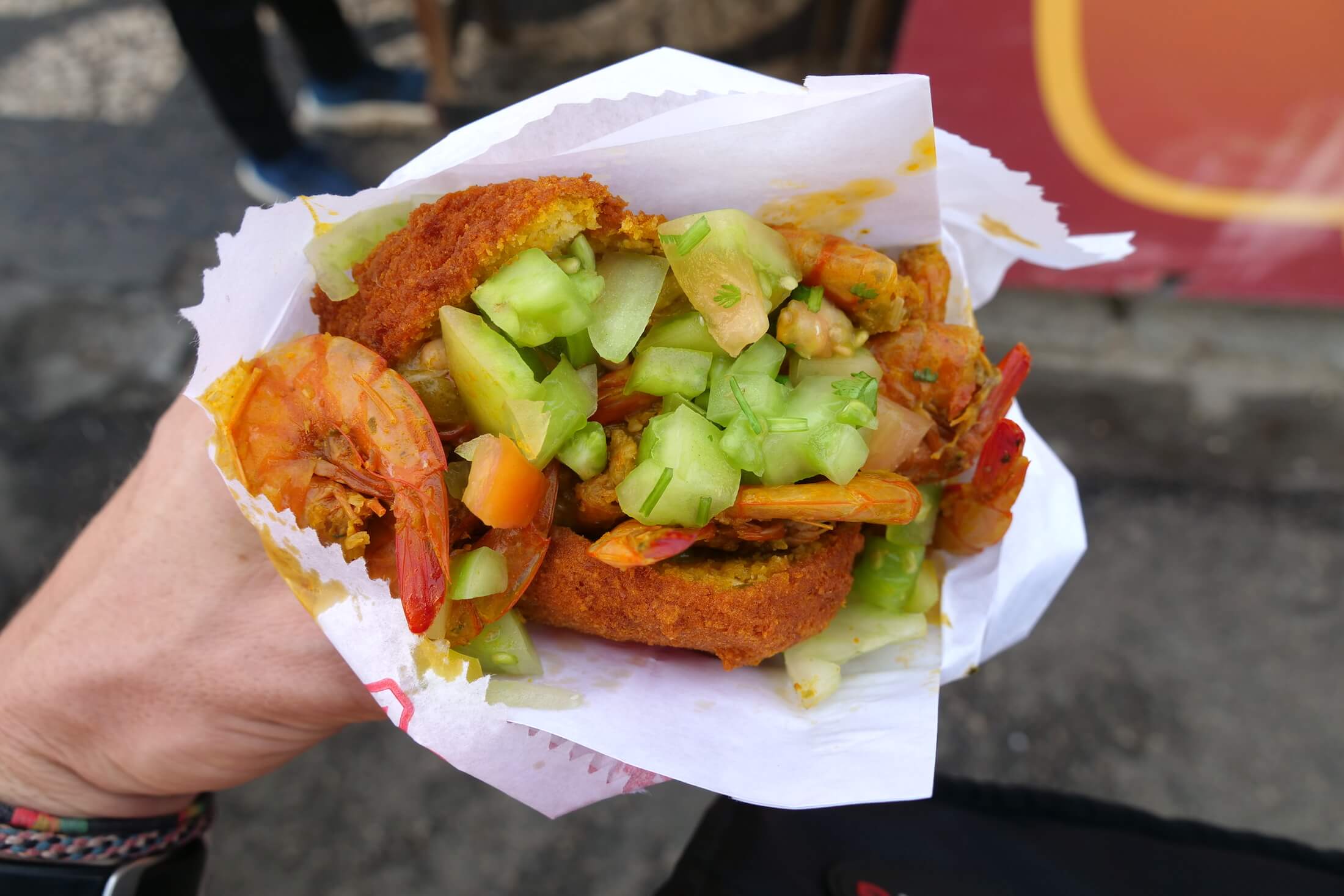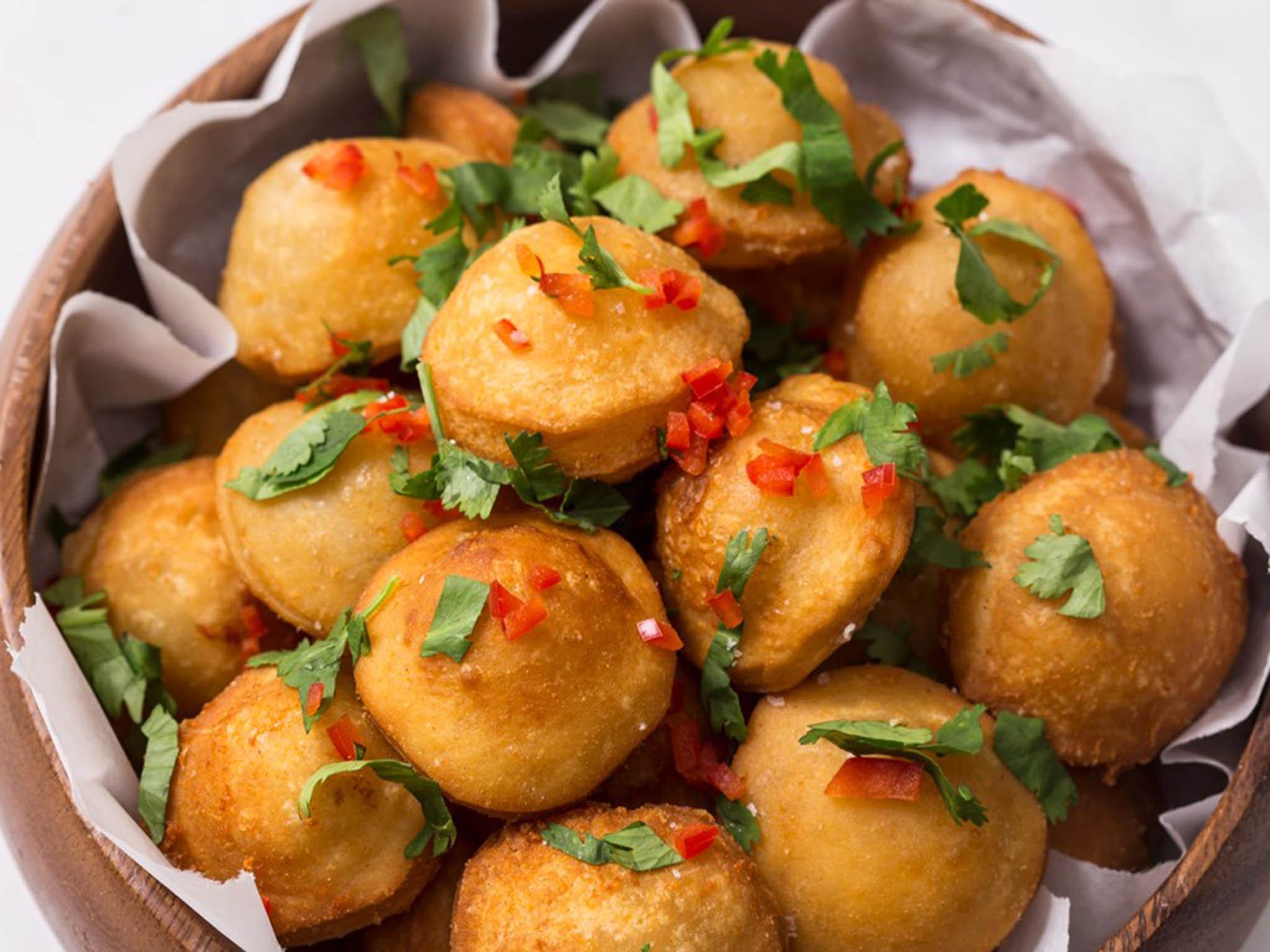Brazilian street food is a vibrant and diverse culinary tapestry that reflects the rich culture and traditions of Brazil. From savory snacks to delectable sweets, these dishes offer a tantalizing taste of the country’s unique flavors and ingredients.
From the bustling streets of Rio de Janeiro to the tranquil beaches of Bahia, Brazilian street food has become an integral part of the country’s social fabric. It nourishes the locals, delights tourists, and showcases the creativity and passion of Brazil’s culinary artisans.
Popular Brazilian Street Food Dishes

Brazilian street food is a vibrant and diverse culinary scene, offering a wide array of delectable dishes that tantalize the taste buds. From savory snacks to sweet treats, these street food delicacies showcase the unique flavors and ingredients of Brazil.
Here are some of the most popular Brazilian street food dishes:
Coxinha
Coxinha is a deep-fried croquette filled with a savory mixture of shredded chicken, vegetables, and spices. It is shaped like a drumstick and coated with a crispy breadcrumb crust. Coxinha is a beloved street food that can be found at street vendors and food stalls throughout Brazil.
Pastel
Pastel is a fried pastry filled with various ingredients, such as cheese, ground beef, or vegetables. It is made with a thin dough that is folded over the filling and then deep-fried until golden brown. Pastel is a popular street food that is often served with a dipping sauce.
Empada
Empada is a small, savory pastry filled with a variety of fillings, such as chicken, cheese, or shrimp. It is made with a flaky dough that is baked until golden brown. Empada is a popular street food that can be found at bakeries and street vendors throughout Brazil.
Acarajé
Acarajé is a deep-fried patty made from black-eyed peas. It is typically served with a spicy sauce and a variety of toppings, such as shrimp, onions, and tomatoes. Acarajé is a popular street food in the northeastern region of Brazil.
Pão de Queijo
Pão de queijo is a small, cheese-filled bread roll. It is made with tapioca flour, which gives it a unique texture that is both chewy and crispy. Pão de queijo is a popular street food that can be found at bakeries and street vendors throughout Brazil.
Regional Variations of Brazilian Street Food
Brazilian street food is a diverse and vibrant culinary landscape that reflects the country’s rich cultural heritage and regional influences. Different regions of Brazil have their own unique dishes and flavors, shaped by local traditions, ingredients, and cooking techniques.
The northeastern region, known for its coastal cuisine, features dishes such as acarajé, a deep-fried bean cake topped with shrimp and coconut sauce, and vatapá, a creamy seafood stew. The southeastern region, including Rio de Janeiro and São Paulo, is known for its pão de queijo, a savory cheese bread, and feijoada, a hearty black bean stew served with rice.
Northern Region
The northern region, with its Amazonian influences, showcases dishes like tacacá, a hearty soup made with shrimp, tucupi (a fermented cassava sauce), and jambu (a native herb that produces a tingling sensation), and pato no tucupi, a duck stew cooked in tucupi sauce.
Central-Western Region
The central-western region, influenced by its cattle-raising culture, features dishes such as empadão goiano, a savory meat pie, and arroz carreteiro, a beef and rice stew cooked with vegetables.
Southern Region
The southern region, with its European influences, is known for its churrasco, grilled meats served with various side dishes, and cuca, a sweet bread filled with fruit or cream cheese.
These regional variations of Brazilian street food showcase the country’s culinary diversity and the rich cultural heritage that has shaped its cuisine.
Health and Nutritional Value of Brazilian Street Food

Brazilian street food offers a vibrant and diverse culinary experience, with an array of dishes that reflect the country’s rich cultural heritage. While the allure of these street delicacies is undeniable, understanding their nutritional value is crucial for making informed choices.
Traditionally, Brazilian street food is prepared using fresh, locally sourced ingredients, emphasizing fruits, vegetables, beans, and whole grains. Cooking methods often involve grilling, roasting, or boiling, preserving the natural flavors and nutrients of the ingredients.
Fresh Ingredients and Traditional Cooking Methods, Brazilian street food
- Fruits and Vegetables:Brazilian street food stalls abound with fresh fruits like açai, papaya, and mango, providing ample vitamins, minerals, and antioxidants.
- Beans and Whole Grains:Dishes like feijoada (black bean stew) and pão de queijo (cheese bread) are staples, offering protein, fiber, and essential nutrients.
- Grilling and Roasting:These cooking techniques enhance flavors while preserving the nutritional integrity of ingredients, minimizing the need for unhealthy fats.
Potential Health Benefits
- Rich in Antioxidants:The abundance of fruits and vegetables in Brazilian street food provides a significant source of antioxidants, which protect against cellular damage and chronic diseases.
- High Fiber Content:Beans and whole grains contribute substantial fiber, promoting satiety, regulating blood sugar levels, and supporting digestive health.
- Low in Processed Foods:Traditional street food dishes often rely on minimally processed ingredients, reducing the intake of unhealthy additives and preservatives.
Potential Health Risks
- High Sodium Content:Some street food dishes, like acarajé (bean fritters) and coxinha (chicken croquettes), can be high in sodium, which may contribute to high blood pressure if consumed excessively.
- Trans Fats:Street vendors may use low-quality oils for frying, introducing trans fats into the food, which can increase the risk of heart disease.
- Hygiene Concerns:Street food is often prepared in open-air conditions, increasing the risk of contamination and foodborne illnesses if proper hygiene practices are not followed.
Cultural Significance of Brazilian Street Food
Brazilian street food holds immense cultural significance, reflecting the country’s rich history, vibrant traditions, and diverse social dynamics. It is an integral part of Brazilian identity and a testament to the nation’s culinary creativity.Street food in Brazil has its roots in the country’s colonial past, with influences from indigenous, African, and European cultures.
It has evolved over time, adapting to the changing tastes and lifestyles of Brazilians. Today, street food vendors can be found in every corner of the country, from bustling city streets to remote villages.
Role in Festivals and Celebrations
Street food plays a vital role in Brazilian festivals and celebrations. During Carnival, for instance, street vendors line the streets, offering an array of traditional treats like acarajé, vatapá, and cocada. At the Festa Junina, celebrated in June, street food stalls sell typical dishes like pamonha, canjica, and quentão.
These foods are not only delicious but also hold symbolic meanings, representing the cultural heritage and traditions of Brazil.
Economic Impact of Brazilian Street Food

Brazilian street food has a profound impact on the country’s economy, playing a crucial role in supporting local businesses and contributing to the national GDP.
The vibrant street food culture provides a livelihood for countless vendors, many of whom are small-scale entrepreneurs. These vendors offer a diverse range of affordable and accessible culinary delights, catering to the needs of a vast customer base. By generating revenue, street food vendors contribute to local economies and stimulate economic activity in urban areas.
Challenges Faced by Street Food Vendors
Despite the economic benefits, street food vendors face several challenges. One significant issue is the lack of formalization, which can lead to limited access to financing and support services. Additionally, street vendors often operate in informal settings, which can pose health and safety concerns.
To address these challenges, initiatives aimed at formalizing the street food sector and improving working conditions for vendors are essential.
Future Trends in Brazilian Street Food
Brazilian street food is a vibrant and dynamic culinary landscape, constantly evolving to meet changing consumer demands and technological advancements. The future holds exciting prospects for this beloved cuisine, as it embraces innovation, globalization, and health-conscious preferences.
One notable trend is the increasing use of technology in the street food sector. Mobile ordering and payment platforms are becoming more prevalent, offering convenience and efficiency for both vendors and customers. This trend is likely to continue, with the emergence of new technologies such as AI-powered food recommendations and personalized dietary suggestions.
Globalization and Fusion Cuisine
Globalization is another major force shaping the future of Brazilian street food. As international flavors and ingredients become more accessible, street vendors are experimenting with fusion dishes that combine traditional Brazilian cuisine with elements from other cultures. This trend is particularly evident in large cities like São Paulo and Rio de Janeiro, where diverse immigrant communities bring their own culinary traditions to the street food scene.
Health-Conscious Consumers
Changing consumer preferences are also influencing the evolution of Brazilian street food. Health-conscious consumers are increasingly seeking healthier options, and street vendors are responding by offering dishes that are lower in fat, sugar, and sodium. This trend is likely to continue, with the emergence of new street food concepts that prioritize fresh, wholesome ingredients and balanced nutrition.
Innovative Street Food Concepts
The future of Brazilian street food is also characterized by innovative street food concepts that push the boundaries of traditional cuisine. These concepts often incorporate modern culinary techniques, unique flavor combinations, and visually appealing presentations. Examples include gourmet food trucks offering upscale street food dishes, pop-up street food events featuring experimental menus, and street food stalls specializing in plant-based or sustainable cuisine.
General Inquiries
Is Brazilian street food safe to eat?
Generally, Brazilian street food is safe to eat, but as with any street food, there are always some risks. To minimize the risk of foodborne illness, choose vendors who have good hygiene practices and cook their food thoroughly.
What are some of the most popular Brazilian street food dishes?
Some of the most popular Brazilian street food dishes include acarajé, coxinha, pão de queijo, tapioca, and brigadeiro.
What are the health benefits of Brazilian street food?
Brazilian street food can be a healthy option, as it often uses fresh ingredients and traditional cooking methods. Many dishes are also gluten-free and vegan.
